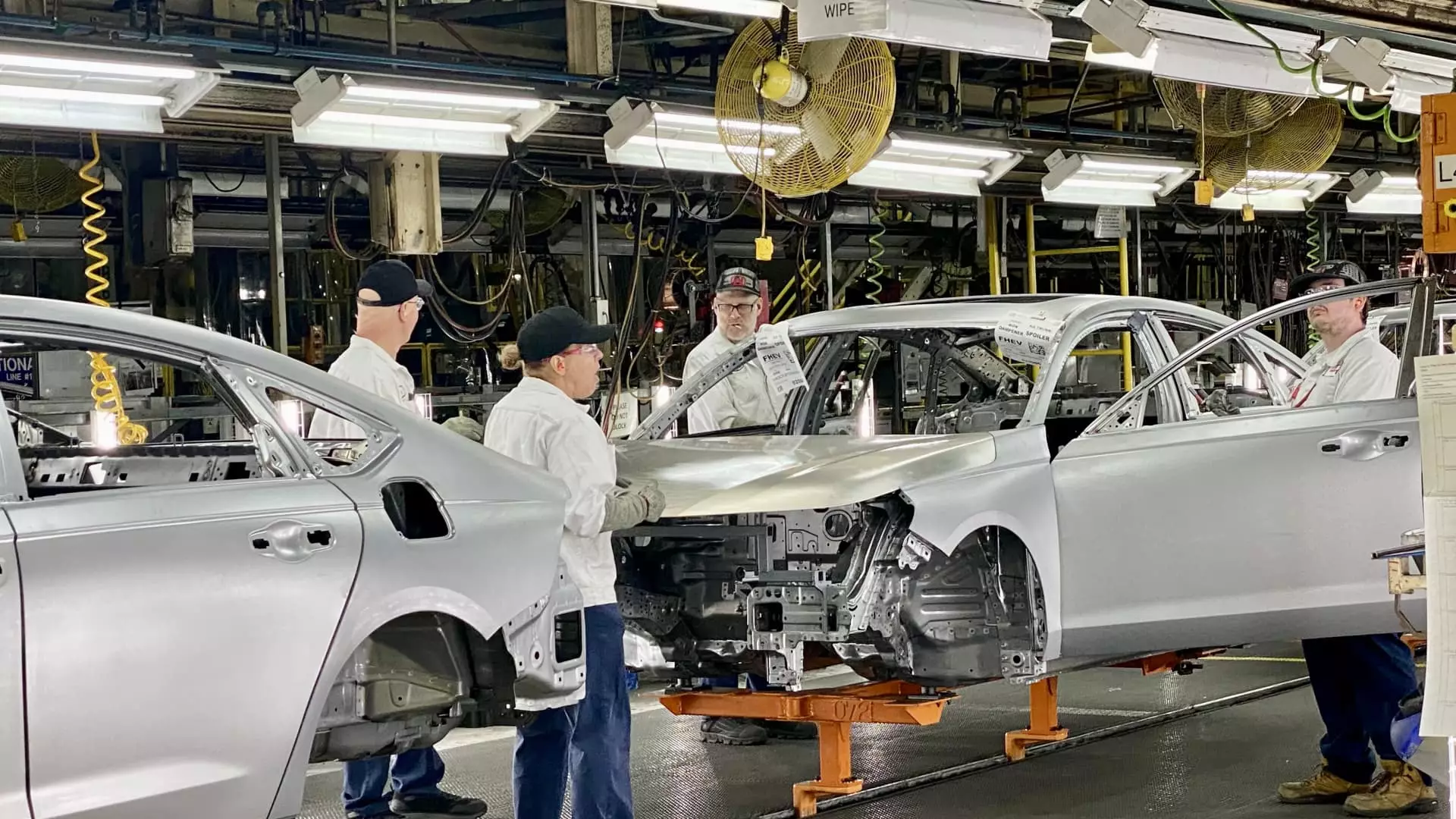Honda Motor Co., the venerable Japanese automaker, is ushering in a significant transformation in its manufacturing philosophy by establishing a state-of-the-art production facility in Ohio. This substantial venture represents an unprecedented shift in strategy for the company, which is investing over $1 billion—revised from an earlier $700 million plan—into the state’s manufacturing capabilities. This article aims to analyze Honda’s ambitious plans, its implications for the future of electric vehicle (EV) production, and the broader context within the automotive industry.
At the heart of Honda’s new initiative are the innovative technologies being implemented at its Marysville plant. Among the most notable upgrades are the installation of six “giga presses,” which were popularized by Tesla. These high-pressure die-cast machines, capable of forming large aluminum components in a single piece, are set to revolutionize the production process at Honda. Giga casting holds promise for significant cost reduction by minimizing the need for assembly and welding, thereby enhancing operational efficiency.
Moreover, the introduction of a new “cell” manufacturing system for the electric vehicle battery cases marks Honda’s commitment to integrating advanced manufacturing techniques. The implementation of nearly 60 flexible manufacturing “cells” allows for a parallel production methodology that mitigates potential disruptions, ensuring a seamless assembly process. This approach reflects a broader trend in manufacturing design, shifting away from traditional linear assembly lines to more agile systems that can adapt to varying demands.
The Ohio facility is more than just a production site; it is positioned as the cornerstone of Honda’s global electric vehicle manufacturing strategy. With an anticipated production capacity of approximately 220,000 vehicles annually, the Marysville plant will be capable of rolling out traditional cars, hybrids, and fully electric models simultaneously. The flagship of this initiative is the upcoming all-electric Acura RSX crossover, set to be the first EV produced at this site, alongside future models like the Honda 0 SUV and the Honda 0 Saloon EV prototypes unveiled at CES.
This shift signifies a strategic realignment for Honda, traditionally a latecomer to the EV market compared to competitors who have already established a robust electric presence. Producing two electric crossovers—the Honda Prologue and Acura ZDX—in partnership with General Motors in Mexico highlights Honda’s recognition of collaborative manufacturing as it transitions into a more competitive position within the industry.
Key to Honda’s strategy is its commitment to sustainability, with the ambitious goal of achieving zero environmental impact by 2050. This pledge encompasses not only the transition to electric mobility but also significant strides in carbon neutrality and resource circulation. The company’s investments in new manufacturing processes aim to reduce emissions and waste significantly. For instance, Honda is incorporating a specialized structural aluminum for their new EV battery packs that can be recycled, demonstrating an effort to address environmental concerns directly tied to manufacturing.
This focus on environmental responsibility is crucial, particularly in light of heightened scrutiny on industries contributing to climate change. Honda’s commitment stands in stark contrast to other automakers that have recently diluted their green promises. By positioning itself as a leader in this space, Honda is actively creating value in alignment with conscious consumerism and regulatory expectations surrounding sustainability.
Despite its competent strategies, Honda faces challenges in overcoming the slow adoption rates of electric vehicles in the U.S. market. Consumer hesitance, compounded by an industry still figuring out its transition, poses risks that Honda must navigate carefully. Furthermore, geopolitical factors—such as potential tariffs on imported automobiles—remain a concern, influencing both operational costs and strategic planning.
As part of reimagining their manufacturing strategy, Honda aims to lessen their dependence on traditional supply chains. By enhancing regional production capabilities and focusing on domestic assembly, Honda is effectively working to insulate itself from external shocks while fostering a more resilient manufacturing ecosystem.
Honda’s $1 billion investment in Ohio marks a pivotal moment not just for the automaker, but for the entire automotive landscape as it moves towards electrification. With its innovative production technologies and commitment to sustainability, Honda is not only transforming its own manufacturing processes but also aiming to set a new standard for others to follow. As the industry evolves, Honda’s proactive approach will significantly influence its competitive position in the electric vehicle market and contribute positively to its overarching goals of environmental stewardship.

